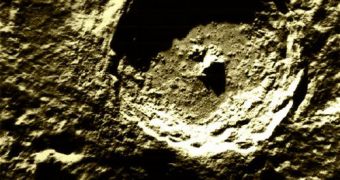The NASA Lunar Reconnaissance Orbiter (LRO) is best known for its contribution to detecting water on Earth's natural satellite. When it launched in 2009, it shared its delivery system with the LCROSS impactor that later slammed into the south lunar pole, revealing the existence of water-ice in craters at those locations. But the spacecraft also innovates other fields of research, such as for example the science of craters, and influences theories that deal with the history of the solar system.
Last week, the NASA Ames Research Center, in Moffett Field, California, hosted the Lunar Science Forum, a meeting dedicated exclusively to handling Moon-related issues, and to presenting new studies. Researchers who spoke there also covered some of LRO's most recent findings. The reason why the spacecraft is so often cited in research reports is the fact that its instruments are extremely sensitive. For example, its cameras can snap pictures at a resolution of no less than 50 centimeter per pixel. For comparison, some telescopes can only snap images with a resolution of several kilometers per pixels.
In the case of Moon studies, researchers feel that investigations conducted with the LRO could provide the international scientific community with sufficient data to elaborate a new view on the history of the solar system. This becomes possible with the aid of crater researches. Already, the cameras aboard the orbiters have been trained on a variety of such impact features, which revealed new insight into how frequently meteorite crashes occur. Experts could also derive additional knowledge on the mechanics of asteroid and comet impacts from the same datasets.
From this, geologists and planetary scientists can derive new measurements to gage the actual age of similar geological formations back on Earth. This could in turn help confirm whether suspected meteorite impacts were indeed the sources of catastrophic events such as large extinctions. Due to our inability to measure the age of craters precisely, situating the time of the impact precisely in time is extremely difficult, Nature News reports.

 14 DAY TRIAL //
14 DAY TRIAL //